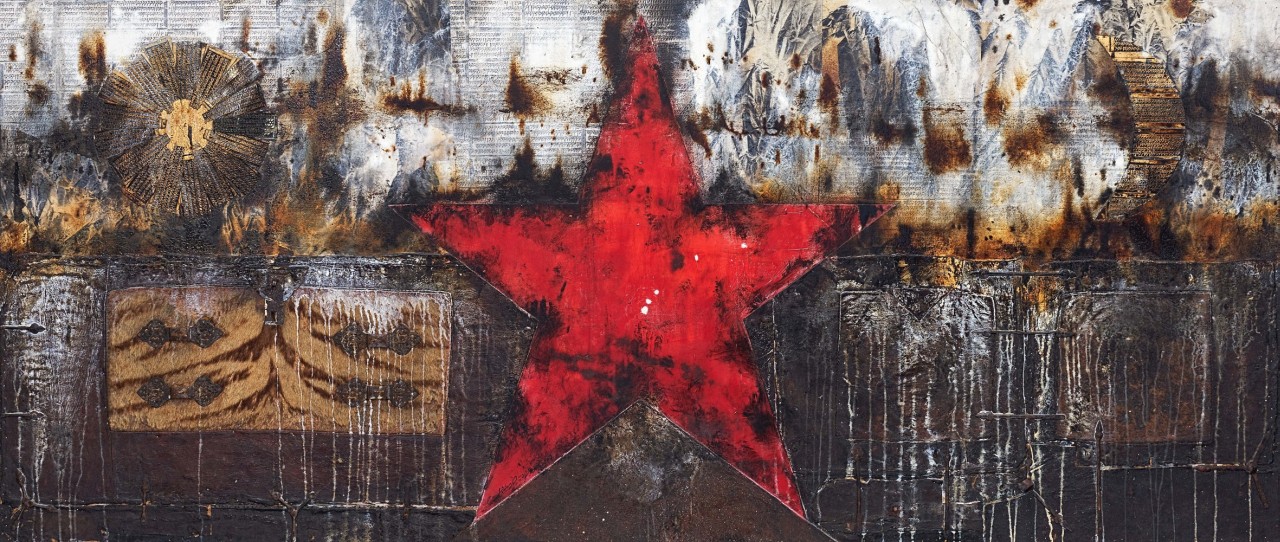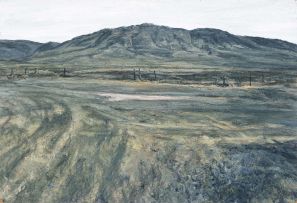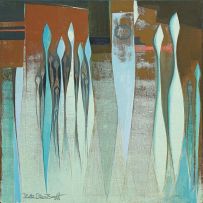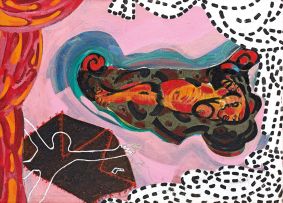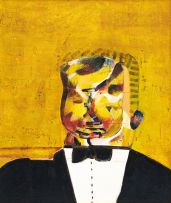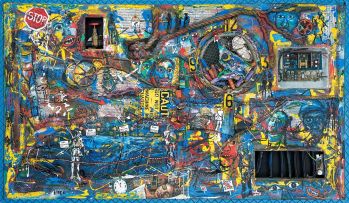Important South African & International Art, Decorative Arts & Jewellery
Live Auction, 16 March 2015
Important South African and International Art Evening Sale
Incl. Buyer's Premium & VAT
About this Item
signed and dated 2007
Notes
Huang Gang was born into a prominent Beijing art family in 1961 and grew up in one of the historical courtyard settlements around the Forbidden City. His father, a professor of Chinese art history, and mother, an archaeologist, cultivated in him an early interest in traditional Chinese arts, including calligraphy. Gang studied at the prestigious Academy of Arts & Design at Tsinghua University, Beijing, throughout the 1980s, graduating with a master's degree in environmental art in 1991. At university Gang became interested in traditional Tibetan art. He began collecting classical drawings and studied Tibet's monastic pictorial tradition, which synthesised elements of Indian and Chinese art. Gang first achieved national recognition during China's economic liberalisation in the early 1990s. He is now a well-known member of the country's post-2000 wave of contemporary artists and has had his work included on prominent group exhibitions attached to the official fringe of the 2011 and 2013 Venice biennales.
Best known for his abstracted assemblage paintings and figural pop sculptures, My Box, Red Star is typical of Gang's mature practice, which liberally draws from various historical epochs, visual styles and literary sources. Henry-Claude Cousseau, a prominent French curator familiar with Gang's work, describes his art as "dialogue between cultures and between time periods".1 This is clearly visible in the material character of his paintings. In the manner of Robert Rauschenberg, who incorporated sculptural elements into the painterly frame, Gang's acrylic and enamel paintings are noted for their unorthodox sculptural fixtures. Drawn from his large personal collection, Gang's paintings have incorporated gilt fragments from Tibetan temple buildings and ancient lacquer screens. My Box, Red Star includes decorative iron fittings and leather used to adorn traditional Tibetan decorative boxes.
In purely formal terms, My Box, Red Star is a landscape painting, highly abstracted but nonetheless clearly discernable as landscape. It incorporates distinctive Tibetan attitudes to landscape. According to Hugh Richardson, a noted scholar of Tibetan art, Tibetans were not interested in "landscape as genre, but instead used landscape motifs for illustrative and narrative purposes".2 As a result Tibetan landscapes were fantastic rather than realistic; nature was less a scene to be imitated through art than a subject to inspire reflection. Literary images and metaphors are commonplace. A five-pointed red star dominates My Box, Red Star. A distinctive twentieth-century symbol linked to proletarian revolutions in China, Russia and elsewhere, the red star is a recurring motif in Gang's assemblage paintings. Often presented alone, here it is flanked by two older aesthetic symbols: a sun and moon, both composed from woodcut plates used to reprint Buddhist scriptures. "The three luminaries are the sun, the moon, and the stars," reads a line from the Three Character Classic, a well-known 13th-century text that is a cornerstone of the Confucian educational system and well known to most Chinese. My Box, Red Star presents a cornucopia of references. As Cousseau pithily observes, Gang's art is "a universe made of sequences, of fragments that are in perpetual metamorphosis".3
1. Cousseau, Henry-Claude (2013), press release accompanying Huang Gang's solo exhibition 'Studio' at Yishu 8, Beijing (23 November 2013 - 25 January 2014).
www.randian-online.com
2. Richardson, Hugh (1983) Art of Tibet, Los Angeles: Los Angeles County Museum of Art. Page 58
3. Cousseau, Henry-Claude, op.cit.
